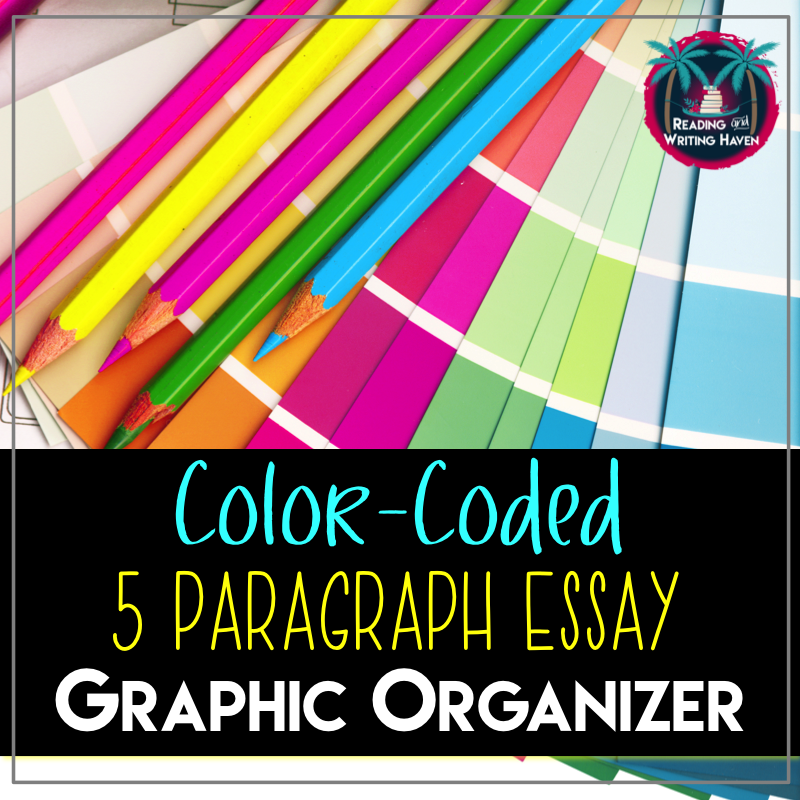8 Meaningful Ways to Differentiate Prewriting
Teaching writing? Sometimes students shut down before they write a single word. Teachers can address this dilemma by making the brainstorming process meaningful and engaging through differentiation and scaffolding. When students are provided with choices, they feel less helpless, become more confident, and produce better compositions.
USE LOCATION TO INSPIRE
When authors experience writer's block, one of the strategies they use to overcome the hurdle is to change their location. Allowing students to write in the library, outside, or at a coffee shop (field trip!) can reap results worthy of reading. Alternate settings are the perfect and simplest option for differentiating prewriting.
MODEL BRAINSTORMING & PREWRITING
I've taught various levels of English. Regardless of whether I'm working with advanced students or struggling writers, all students benefit from class brainstorming sessions where the teacher models expectations and scaffolds students from teacher led instruction to guided practice and, finally, to independence.
What might this look like? In my classroom, after I assign an essay, the first order of business is to show students how to begin. We brainstorm topics, research to find support, and fill out graphic organizers together as a class. It helps students follow along when I provide them with step-by-step directions that they can refer back to later.
LIMIT FRUSTRATION VIA CONFERENCES
Some students have difficulty transcribing their ideas onto paper and organizing their thoughts logically. In these instances, it's necessary to talk students through their prewriting. As you discuss ideas one-on-one, have students take notes on their prewriting materials. As an accommodation, teachers or peer partners can jot down the information as students think aloud about what they would like to write. Conferring is an important part of the writing process!
DIFERENTIATE GRAPHIC ORGANIZERS
You might be surprised to find that simply offering students several different options for how they would like to complete their prewriting increases motivation. Possibilities might include but certainly are not limited to flow charts, webs, trees, outlines, journaling, sketch notes, mind mapping, color coding, acronyms, and free writing. When I model prewriting, I demonstrate several different strategies. As students begin brainstorming for their own topic, they are free to choose which prewriting approach they'd like to use.
LET THEM READ THE GOOD STUFF
As Kelly Gallagher writes, "If we want kids to write, we have to take them swimming in the genre first. Start by wading before taking them to the deep end." An integral facet of the brainstorming process should be allowing students to get knee deep in examples of the genre we expect them to write. Teachers can use examples they have written, essays written by previous students, or even published pieces and novels, depending on the genre of study. Not sure where to start? Illinois Literacy in Action has some great lists for argumentative, informative, and narrative mentor texts.
PROVIDE TIME TO DISCUSS WITH PEERS
Students can learn quite a bit from one other. Give them time to discuss their ideas with a peer or a small group, and listen to the feedback they offer. Not only does this strategy allow students valuable time to mull over their ideas, but also it provides an avenue for teachers to teach students how to have meaningful and productive discussions about writing.
USE CAROUSELS TO GENERATE TOPICS
One of the best ways I've found to differentiate prewriting for ability levels and interests is to have lengthy class discussions about possible topics. Generally, I lead these conversations, but I have also found success in having students participate in carousel activities.
To illustrate, I hang large sheets of butcher paper around the room. On the top of each page, we brainstorm a possible topic for the essay. I write that topic at the top. Then, students divide into small groups and work together to devise possible angles they might use to approach that topic. In doing so, they are writing questions as well as possible thesis statements. Students move from station to station and add their thoughts. To wrap up, each small group presents their ideas for a given topic to the whole group.
SCAFFOLD RESEARCH
Writing a research paper? A successful means of engaging students is by providing an appropriate anticipatory set. Capture students' interest in topics by incorporating source material and discussing it as a group. Showing them related video clips, reading high-interest articles as a class, and bringing in guest speakers for the subject are all ideal approaches. Interest is a game-changer when it comes to writing. If students are still struggling with the research element of brainstorming, scaffold their experience by providing a couple articles to get them started.
Writing can be challenging and frustrating, or it can be freeing and therapeutic. By scaffolding and differentiating the prewriting process, we reduce the likelihood that students will struggle. Click here to access a free argumentative prewriting resource to scaffold your students' prewriting experience.
RELATED RESOURCE
about the author…
Melissa is the creator of The Reading and Writing Haven and a collaborative blogger on Teachwriting.org.
A secondary English teacher and instructional coach for over a decade, Melissa is an avid reader and writer, and she loves sharing ideas and collaborating with fellow educators. Melissa use her degrees in English, Curriculum & Instruction, and Reading as well as her Reading Specialist certification to ponder today’s educational issues while developing resources to help teachers, students, and parents make learning more relevant, meaningful, and engaging.




